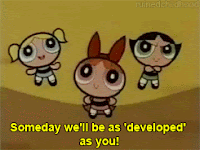Ratio
of Female to Male Characters (from 2008-2012)
Gender of the Main Protagonist
Looking at
only American, or American/Foreign Coproduced Animated Films Rated G or PG that
were released in at least 500 theaters. If the film contained live action
scenes, it primarily had to be about the animated characters set in an animated
world.
9/53 female protagonists
46/53 male protagonists
17% female protagonists
83%
male protagonists
2/9 female protagonists had an equal male protagonist who shared the movie
2/46
male protagonists had an equal female protagonist who shared the movie
Love Interests
6/9 female protagonists had love interests (67%)
26/46 male protagonists
had love interests (57%)















